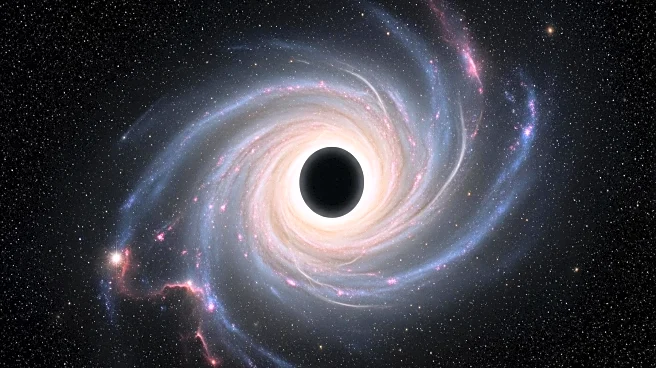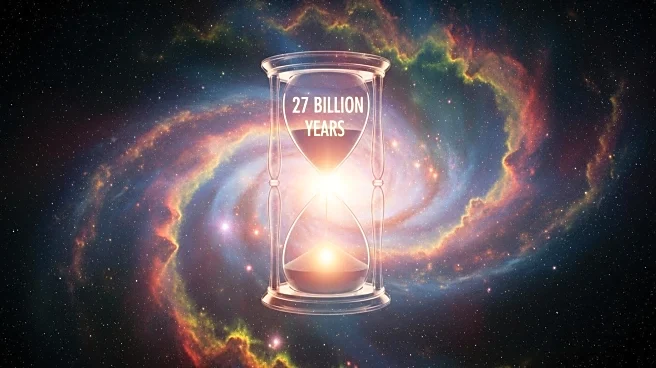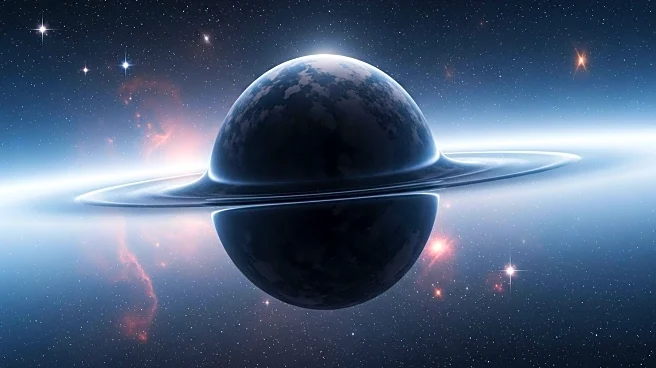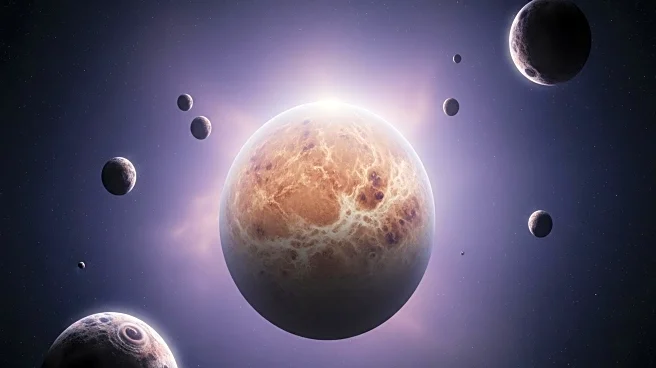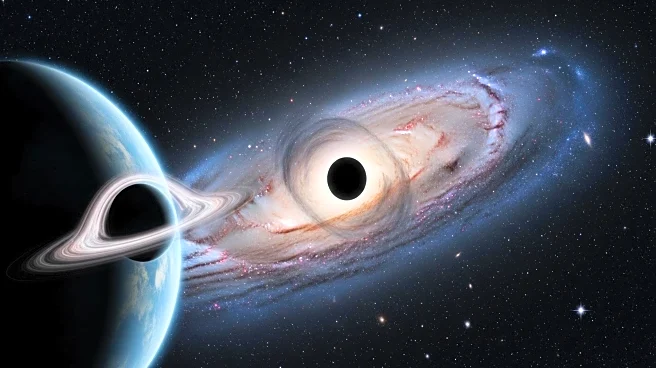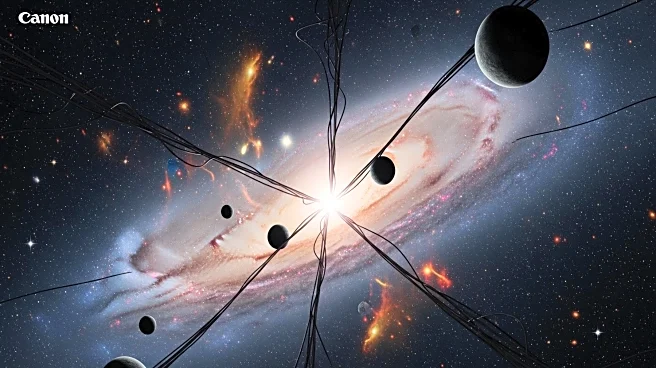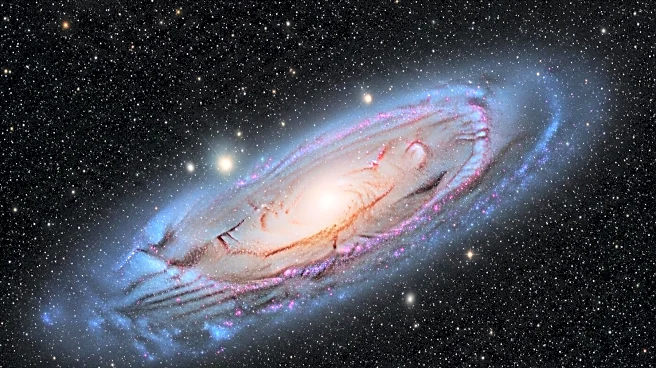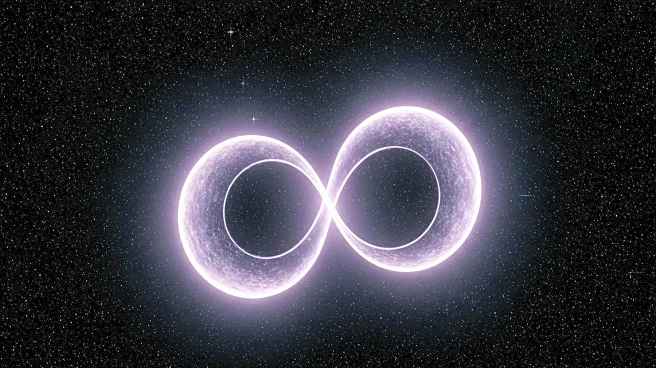What's Happening?
Researchers from UC Riverside have proposed a theory suggesting that dark matter could be responsible for transforming giant planets into black holes. The study, published in Physical Review D, explores how dark matter particles might accumulate in the cores of Jupiter-sized exoplanets over time, eventually collapsing into black holes. This theory, known as the superheavy non-annihilating dark matter model, posits that dark matter particles are extremely massive and do not annihilate each other upon interaction. The researchers suggest that these particles are captured by exoplanets, lose energy, and drift toward their cores, where they accumulate and potentially collapse into black holes.
Why It's Important?
This research could significantly impact our understanding of both dark matter and planetary evolution. If proven, the theory could provide a new method for detecting dark matter by observing exoplanets. It challenges existing models of black hole formation, which typically require massive stars. The findings could also influence future astronomical surveys and missions aimed at understanding the universe's dark matter composition. The potential discovery of planet-sized black holes would be a groundbreaking development in astrophysics, offering new insights into the early universe and the role of dark matter in cosmic evolution.
What's Next?
The researchers plan to use upcoming space missions to gather more data on exoplanets, which could help test and refine their dark matter model. Observations of exoplanets in regions rich in dark matter, such as the Milky Way's galactic center, could provide further evidence to support or refute the theory. The study also suggests that future telescopes may be able to detect high-energy radiation emitted by dark matter interactions, offering another avenue for investigation.
